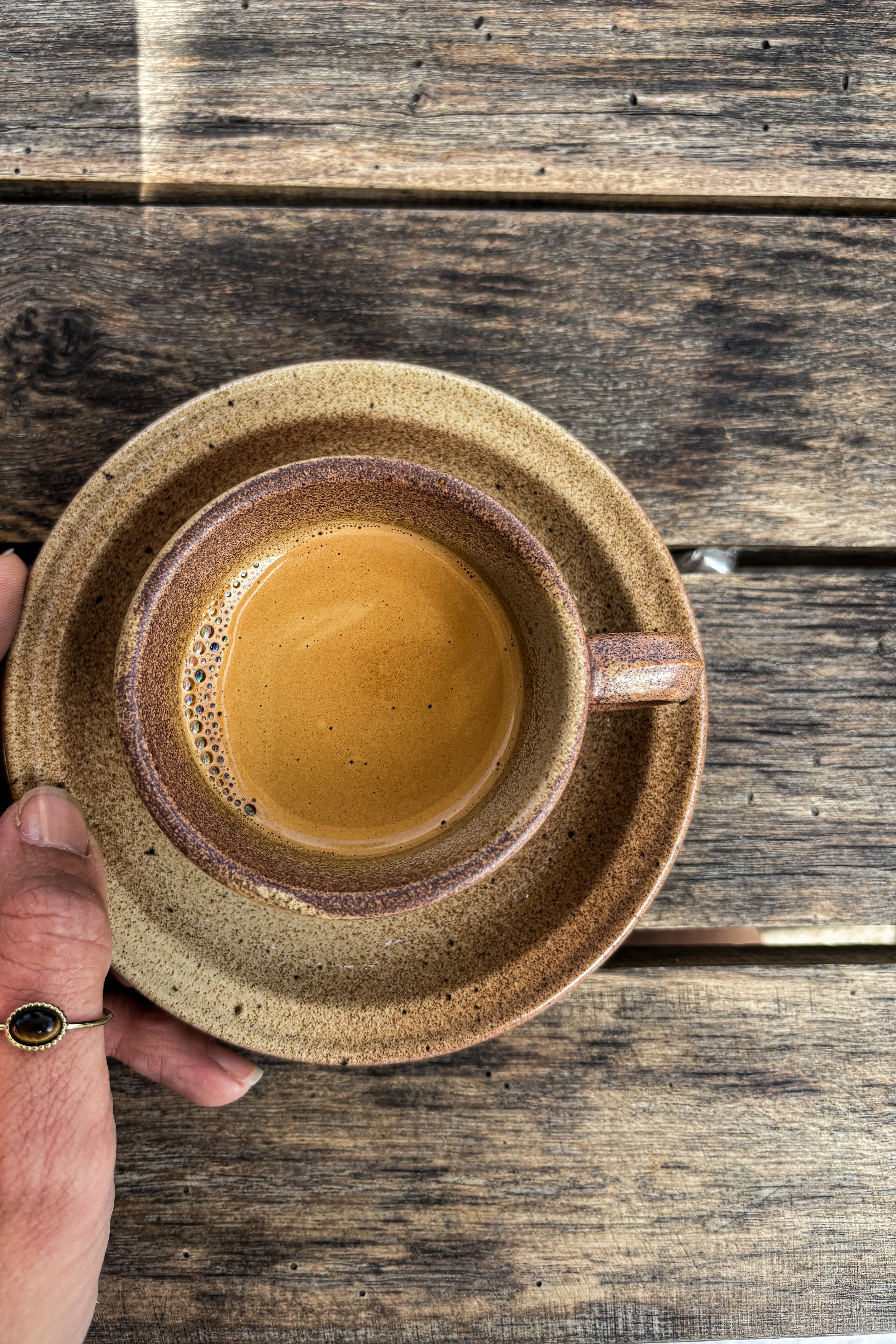Served with milk
Once upon a time life was easier, and even though I am one of those people who views childhood through rose-coloured glasses and thinks that life was better before the 1990s, if I look at this period in terms of coffee enjoyment, I did enjoy good coffee, but could drink bad coffee, often not realizing it. I would calmly sit and enjoy cappuccino – the foam would pour over the edges of the cup like an avalanche – for hours, because that was cool. Visiting large chain cafés was a must, because then I would have something to tell the others. In Italy, and in some local restaurants, the cappuccino (whose foam would be blown away by the wind or was virtually non-existent) was completely OK – that’s the way it was served so it must have been right, and there was also no point in complaining. Now, all that has changed, and one of my first tasks when planning a trip – whether it be to New York, London, Paris, or Tallinn – is to google the words “specialty coffee places” or “best coffee in the city” and so on. When I travel, there are days I don’t drink coffee at all, and I think my health has benefited from that, proving that I continue to live and learn and develop. This also proves that I am not addicted to coffee – on days I don’t have coffee, my hands do not start to shake and I don’t want to kill anyone who mentions the fact that they had coffee. No – coffee is something marvelous, it’s a ritual. But to truly enjoy it, you need a good espresso and knowledge how to turn it into a foamy goodness.
“Latte art – a drawing formed on the foam.”
Cappuccino
A very popular drink, especially for those who want coffee, but nothing too strong.
1 part espresso + 1/4 part milk.
Its best to drink cappuccino within 30 seconds of preparing, because the milk begins to lose its silkiness. When getting this drink in a café and after admiring it and taking its picture, you must rejuvenate it by stirring. The foam must be mixed into the milk to get that silky flavour.
Serve in a 180 ml cup.
The cup should be 60º warm.
The milk should be at 60º, because you should not feel like you are burning your tongue.
Double cappuccino
Serve in a 250 ml cup.
Double espresso.
Add slightly more milk.
Caffè latte
Latte in Italian means milk, and, it seems that this coffee beverage was first made for children – so that kids could drink coffee with the adults, but would not be overwhelmed by the caffeine. If you are in Italy, say caffèlatte, otherwise they will just serve you coffee with milk. And remember – there is no classic recipe. Everybody makes it with as much milk as desired, because basically, it’s coffee-flavoured milk.
If you want a classic, stick to 1 part espresso + 6 parts whipped milk.
30 ml espresso.
Whip the milk just like for cappuccino.
The large size of the cup, in which it’s traditionally served, and the volume make it difficult to make latte art.
Stir before drinking.
“All coffee drinks should be consumed without sugar, because sugar kills the taste.”
Important!
All coffee drinks should be served in cups that are 60º warm.
Extraction time – the period of time it takes for water to drip through the filter into the cup.



